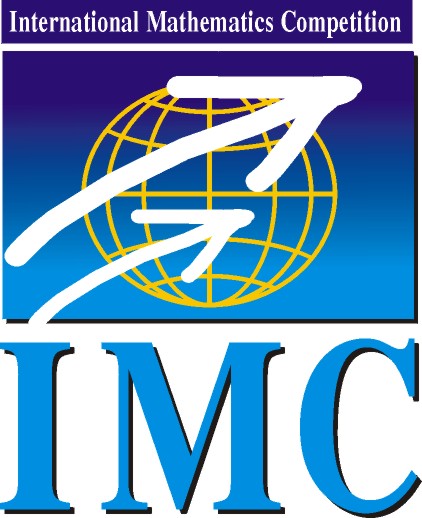
|
International Mathematics Competition
|
IMC 2026 |
| Information | Schedule | Problems & Solutions | Results | Contact |
IMC2025: Problems on Day 1
Problem 1. Let \(\displaystyle P\in\mathbb{R}[x]\) be a polynomial with real coefficients, and suppose \(\displaystyle \operatorname{deg}(P)\geq 2\). For every \(\displaystyle x \in \mathbb{R}\), let \(\displaystyle \ell_x \subset \mathbb{R}^2\) denote the line tangent to the graph of \(\displaystyle P\) at the point \(\displaystyle ( x, P(x) )\).
(a) Suppose that the degree of \(\displaystyle P\) is odd. Show that \(\displaystyle \displaystyle\bigcup_{x \in \mathbb{R}} \ell_x = \mathbb{R}^2.\)
(b) Does there exist a polynomial of even degree for which the above equality still holds?
Mike Daas, Max Planck Institute for Mathematics, Bonn
Problem 2. Let \(\displaystyle f\colon\mathbb{R} \to \mathbb{R}\) be a twice continuously differentiable function, and suppose that \(\displaystyle \int_{-1}^{1}f(x)\,\mathrm{d}x=0\) and \(\displaystyle f(1)=f(-1)=1\). Prove that
\(\displaystyle \int_{-1}^{1} \left(f''(x)\right)^2\,\mathrm{d}x\geq 15 , \)
and find all such functions for which equality holds.
Alberto Cagnetta, Università degli Studi di Udine, Italy
Problem 3. Denote by \(\displaystyle \mathcal{S}\) the set of all real symmetric \(\displaystyle 2025\times 2025\) matrices of rank \(\displaystyle 1\) whose entries take values \(\displaystyle -1\) or \(\displaystyle +1\). Let \(\displaystyle A,B\in\mathcal{S}\) be matrices chosen independently uniformly at random. Find the probability that \(\displaystyle A\) and \(\displaystyle B\) commute, i.e. \(\displaystyle AB=BA.\)
Marian Panţiruc, "Gheorghe Asachi" Technical University of Iaşi, Romania
Problem 4. Let \(\displaystyle a\) be an even positive integer. Find all real numbers \(\displaystyle x\) such that
\(\displaystyle \left\lfloor \sqrt[a]{b^{a} + x} \cdot b^{a - 1} \right\rfloor = b^{a} + \left\lfloor x/a\right\rfloor \tag{1} \)
holds for every positive integer \(\displaystyle b\).
(Here \(\displaystyle \lfloor x\rfloor\) denotes the largest integer that is no greater than \(\displaystyle x\).)
Yagub Aliyev, ADA University, Baku, Azerbaijan
Problem 5. For a positive integer \(\displaystyle n\), let \(\displaystyle [n]=\{1,2,\ldots,n\}\). Denote by \(\displaystyle S_n\) the set of all bijections from \(\displaystyle [n]\) to \(\displaystyle [n]\), and let \(\displaystyle T_n\) be the set of all maps from \(\displaystyle [n]\) to \(\displaystyle [n]\). Define the order \(\displaystyle \operatorname{ord}(\tau)\) of a map \(\displaystyle \tau\in T_n\) as the number of distinct maps in the set \(\displaystyle \{\tau,\tau\circ \tau, \tau\circ \tau\circ \tau,\ldots\}\) where \(\displaystyle \circ\) denotes composition. Finally, let
\(\displaystyle f(n) = \max_{\tau\in S_n}\,\operatorname{ord}(\tau) \quad\text{and}\quad g(n) = \max_{\tau\in T_n}\,\operatorname{ord}(\tau) . \)
Prove that \(\displaystyle g(n)<f(n)+n^{0.501}\) for sufficiently large \(\displaystyle n\).
Fedor Petrov, St Petersburg State University
© IMC